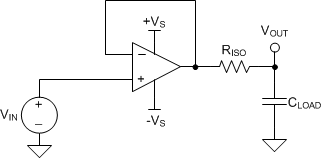SBOS735 September 2015 OPA2171-EP
PRODUCTION DATA.
- 1 Features
- 2 Applications
- 3 Description
- 4 Revision History
- 5 Pin Configuration and Functions
- 6 Specifications
- 7 Detailed Description
- 8 Application and Implementation
- 9 Power Supply Recommendations
- 10Layout
- 11Device and Documentation Support
- 12Mechanical, Packaging, and Orderable Information
Package Options
Mechanical Data (Package|Pins)
- DCU|8
Thermal pad, mechanical data (Package|Pins)
Orderable Information
1 Features
- Supply Range: 2.7 to 36 V, ±1.35 V to ±18 V
- Low Noise: 14 nV/√Hz
- Low Offset Drift: ±0.3 µV/°C (Typ)
- RFI Filtered Inputs
- Input Range Includes the Negative Supply
- Input Range Operates to Positive Supply
- Rail-to-Rail Output
- Gain Bandwidth: 3 MHz
- Low Quiescent Current: 475 µA per Amplifier
- High Common-Mode Rejection: 120 dB (Typ)
- Low-Input Bias Current: 8 pA
- microPackage: Dual in VSSOP-8
-
Supports Defense, Aerospace, and Medical Applications:
- Controlled Baseline
- One Assembly/Test Site
- One Fabrication Site
- Available in Extended (–55°C to 125°C) Temperature Range
- Extended Product Life Cycle
- Extended Product-Change Notification
- Product Traceability
Unity-Gain Buffer With RISO Stability Compensation

2 Applications
- Tracking Amplifier in Power Modules
- Merchant Power Supplies
- Transducer Amplifiers
- Bridge Amplifiers
- Temperature Measurements
- Strain Gauge Amplifiers
- Precision Integrators
- Battery-Powered Instruments
- Test Equipment
3 Description
The OPA2171-EP is a 36-V, single-supply, low-noise operational amplifier with the ability to operate on supplies ranging from 2.7 V (±1.35 V) to 36 V (±18 V). These devices are available in micro-packages and offer low offset, drift, and bandwidth with low quiescent current. The single, dual, and quad versions all have identical specifications for maximum design flexibility.
Unlike most operational amplifiers, which are specified at only one supply voltage, the OPA2171-EP is specified from 2.7 to 36 V. Input signals beyond the supply rails do not cause phase reversal. The OPA2171-EP is stable with capacitive loads up to 300 pF. The input can operate 100 mV below the negative rail and within 2 V of the top rail during normal operation. Note that these devices can operate with full rail-to-rail input 100 mV beyond the top rail, but with reduced performance within 2 V of the top rail.
The OPA2171-EP operational amplifier is specified from –55°C to 125°C.
Device Information(1)
| PART NUMBER | PACKAGE | BODY SIZE (NOM) |
|---|---|---|
| OPA2171-EP | VSSOP (8) | 2.30 mm × 2.00 mm |
- For all available packages, see the orderable addendum at the end of the data sheet.
4 Revision History
| DATE | REVISION | NOTES |
|---|---|---|
| September 2015 | * | Initial release. |